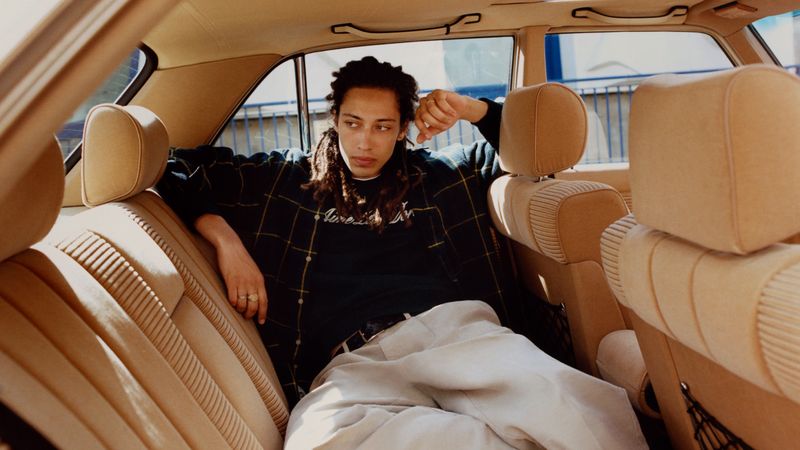THE JOURNAL

No one could have predicted that the white-hot centre of American fashion for the past decade would be New York City's most unassuming borough. Queens never became a commodified cultural export like Brooklyn did, nor did it ever compete with the cosmopolitanism of Manhattan or give birth to a dominant culture like the Bronx did with hip-hop. (Staten Island's pastoral otherness is its own thing.)
But maybe we shouldn’t be surprised that a brand like Aimé Leon Dore could emerge from a Queens apartment and become one of the world's most influential brands. It is the World’s Borough, after all, home to more than two million people in the city of 800 languages[DDE1] , where an unmistakable hum of energy runs from Jamaica to Woodside, the Rockaways to College Point. And Queens’ own Teddy Santis knew there was a power in that patchwork. He turned the borough’s modest gravity into the powerfully unaffected cool of ALD.
When Santis launched the brand in 2014, he was betting that there was room in menswear for something that walked up to the timeline of American heritage brands and looked both ways. These were clothes that felt like they’d been pulled from your cool uncle’s closet but cut to have modern shapes and drapes.
Timing is everything, though. When Santis was getting ALD off the ground, streetwear was just hitting a saturation point. Supreme drops were putting queues around the block, and it seemed like every week a new brand was chasing the same scarcity marketing clout. Meanwhile, the #menswear movement had gone dormant, leaving a disconnect between millennial consumers and the vestiges of more traditional tailoring. Santis stepped into the breach between and created something that had the Downtown cool of streetwear with the sensibilities of heritage brands such as J.Crew and LL Bean.

“The dream for Aimé Leon Dore was a legacy – and legacies aren’t built on hype alone”
This wasn’t so much a revision of American fashion history as it was a continuation of it. The greatest American designers had always been storytellers first. Ralph Lauren sold “America” as an aesthetic, Tommy Hilfiger turned preppy sportswear into street currency and Mark McNairy subverted classics with a wink and a smile. Santis would tell another story, one that could only come from a place like Queens, where traditions and styles rammed into one another at high speeds.
Santis came up in the borough as the son of immigrant Greek parents and did what every first-gen kid does – voraciously consume every bit of culture around him. He got into graffiti, breakdancing, basketball, hip-hop and house music, all of which became foundational references for ALD. (The brand’s name combines the French word for “beloved” with Santis’ father’s nickname “lion”. The “Dore” comes from Santis proper given name: Theodore.) It was only natural, then, that the brand’s lookbooks became aesthetic patchworks with interlocking references that feel simultaneously universal and unmistakably New York. Intarsia Yankees logos on alpaca knits. Herringbone balmacaans worn over sporty anoraks. Basketball shorts in dusty earth tones with intricate lacework instead of nylon mesh.
It was like this from the start. The brand’s early collections read like love letters to the New York Santis grew up in. Varsity jackets referencing the Mets’ glory days sold out in minutes, as did the open-knit leisure shirts that were straight out Astoria summers circa 1981 and the New Balance collaborations that made put an unalloyed identity on your feet. This wasn’t fashion as fantasy, but fashion as a memory you could wear. It helped that the fabrics were beautiful and the tailoring was always on point, thanks to Santis’ all-star team of designers and stylists such as Rocío Choi, Christian Geigel, Nello Gonzalez and the legendary Aaron Levine.
“The brand led the shift towards considered staples – relaxed without being sloppy, elevated without being precious”


But all those sold-out drops and blockbusting queues can lead some lead brands to a permanent state of pursuit. Santis never wanted that. His dream for Aimé Leon Dore was a legacy – and legacies aren’t built on hype alone. Even the brand’s Mulberry Street flagship, which opened in 2019, felt like a rejection of the minimalism that defined so much of retail design at the time. The store had a warmth to it, like you were entering the meticulously laid out den of your especially slick uncle or aunt, right down to the wood panelling and hi-fi sound system.
All that work has turned ALD into one of the most influential brands in menswear. The brand led the shift towards considered casual staples that are relaxed without being sloppy, elevated without being precious. It has defined the aesthetic of a certain type of stylish Downtown guy who started dressing in luxuriously draped overcoats and well-apportioned Oxford shirts. You can even see ALD’s influence in the renewed interest in heritage American brands, whether it’s contemporary designers mining Champion and Russell Athletic archives or the sudden relevance of pieces that seemed impossibly square years ago.
Aimé Leon Dore’s new exclusive capsule collection at MR PORTER follows that sensibility. The 54-piece drop is fuelled by that 1990s nostalgia, mirroring that relaxed prep sophistication that has catapulted an entire genre of menswear.
Maybe we shouldn’t be so surprised that a boy from the boroughs could make a brand that made the entire fashion industry turn its head. As Queens goes, so goes the world.